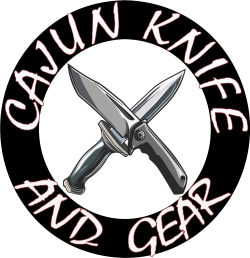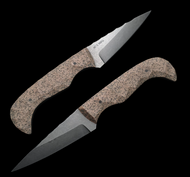How to Choose the Best Fixed Blade Knife
Aug 27th 2025
When it comes to durability, strength, and preparedness, fixed blades are in a class of their own. Whether you are starting a campfire out in the wild, field dressing game, or just require a no-fail utility tool for daily use, a fixed blade provides unparalleled performance. There are so many styles, steels, sizes, and options that one might end up wondering how to pick one for themselves.
Here, everything you need to consider before buying a knife will be discussed. Blade steel, handle materials, tang types, and carry methods all will be covered.
Whether you are an experienced outdoorsman or buying your first knife, this buyer’s guide will help you in choosing the best fixed blade for your particular needs. So, let’s begin.
Define Your Purpose
The first thing to ask yourself is what you will use this knife for.
- Everyday Carry (EDC) – Choose something light and compact.
- Camping and Hiking – Choose versatility, including food preparation, cutting ropes, and fire starting tasks.
- Hunting – Choose a knife designed to skin and field dress.
- Tactical/Self-Defense – Choose aggressive blade shapes and smooth draw sheaths.
- Survival or Bushcraft – Full-tang construction, rugged steel, and multi-tasking ability are priorities.
Knowing your main purpose helps to limit your choices based on size, steel, handle, and even sheath.
Why Choose a Fixed Blade Knife?
The next thing you need to know is why you need a fixed-blade knife. There are other types of knives as well, such as OTF and folding knives. But why should you choose a fixed blade? Let's find that out.
1. Unmatched Strength and Durability
The fixed blade knife is forged from one solid piece of steel from tip to the handle, or what is called a full tang. The design offers added strength, and the knife is less likely to break under pressure than folding knives. It can easily withstand heavy-duty operations like batoning, chopping, or prying.
2. Quick and Reliable Deployment
Since it has no moving parts, a fixed blade knife is always ready to use. No fumbling around with opening mechanisms, just pull it from its sheath, and you are ready to roll. This makes it best suited for emergencies or circumstances involving speed and reliability.
3. Easier to Clean and Maintain
Fixed-blade knives tend to be easier to clean than folding knives for the reason that they possess no pivot points/locking mechanisms that can catch dirt, and are a better option for outdoors or survival situations where cleanliness and maintenance could be questionable.
4. Versatility Across Applications
Fixed blades perform many functions, such as cutting knots, food prep, woodwork, hunting, and even self-defense. Their ability to perform various applications across different surroundings and tasks cannot be defeated due to being larger and stronger.
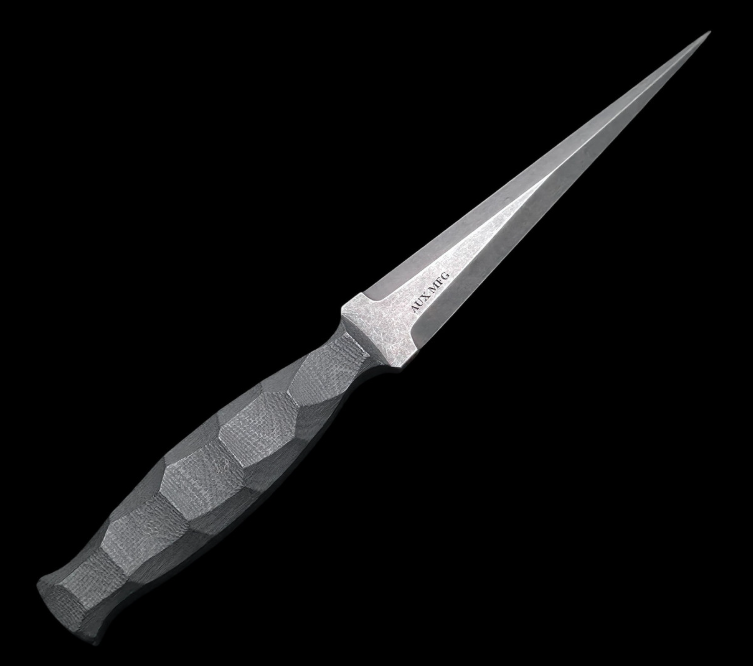
Key Factors to Consider
There are some factors that have to be considered when choosing a fixed blade for your particular use. Let’s have a look at them.
1. Blade Steel
Steel controls edge retention, toughness, and corrosion resistance. The following are some of the typical high-end steels that you can choose from.
- S35VN – Outstanding overall performance and corrosion resistance.
- D2 Tool Steel – Very hard and holds an edge well, but may require a little maintenance to prevent rust.
- 1095 Carbon Steel – Has strong hardness and is very tough, making it a favorite among survival knives, but needs to be oiled regularly to maintain its toughness.
- CPM-3V – Extremely tough and fabulous option for knives designed for hard field use.
Consider where you will be using the knife - humid and wet conditions may call for stainless steel, dry conditions may provide for carbon steel variants.
2. Blade Shape
The shape of the blade influences cutting speed, tip durability, and handleability. These are the familiar blade shapes that you will encounter.
- Drop Point – Great for everyday use with a rugged tip and drop-point curve for slashing.
- Clip Point – Pointed tip for piercing cuts that are very common with hunting knives.
- Tanto – Thickened tip for piercing, utilized in heavy-duty tasks and popular in tactical operations.
- Spear Point – Symmetrical tip, which is typical in self-defense or combat knives.
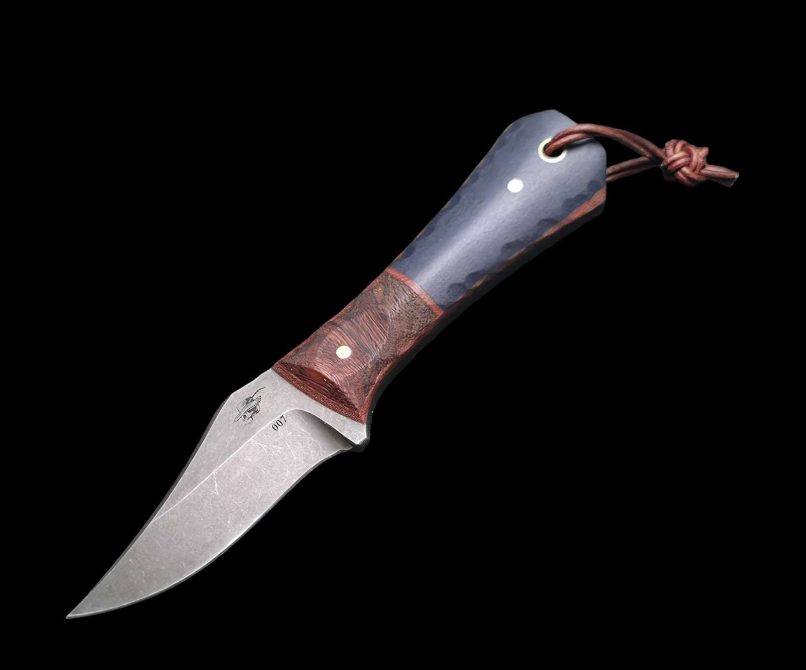
3. Handle Material and Ergonomics
Choose a handle that is comfortable in the hand and that offers a secure grip. Here are some highly used materials.
- Micarta – Light in weight and grippy even when damp.
- G-10 – Hard and weather-resistant.
- Kraton or Rubberized Handles – Soft-touch grip, excellent for protracted use.
- Wood/Bone – Classic and attractive, but possibly not best suited for wet conditions.
An effective ergonomic design prevents hand fatigue and blisters with prolonged use.
4. Tang Type
The tang of the knife is a critical design feature and determines how strong and durable the knife will be. There are the following three types of tangs.
- Full Tang – Most robust construction. The blade steel protrudes through the handle.
- Partial Tang – Lighter but less strong, steer clear of heavy use.
- Hidden Tang – Provides looks (frequently utilized in decorative knives), but not necessarily the strongest.
5. Blade Length
Blade length determines the effectiveness of your knife for certain tasks.
- Less than 4 Inches – Excellent for precision, easy to carry, and maneuver. Best for EDC or skinning.
- 4-6 Inches – Flexible, good for camping, survival, or utility.
- More than 6 Inches – Most effective for chopping, batoning, and fighting. Too cumbersome for general users.
Assess your needs before choosing a size. Bigger is not always better.
6. Sheath
A quality sheath protects not only your knife but also provides easy and secure carry. Let’s have a look at different types of sheaths.
- Kydex – Durable, waterproof, rigid, and has great retention.
- Leather – Classy and stylish, but can be prone to breaking in.
- Nylon – Cost-effective and lightweight, but can lack durability.
Be sure to look for belt compatibility, MOLLE compatibility for tactical attachments, or horizontal/vertical carry options. Some even offer multiple angles of carry.
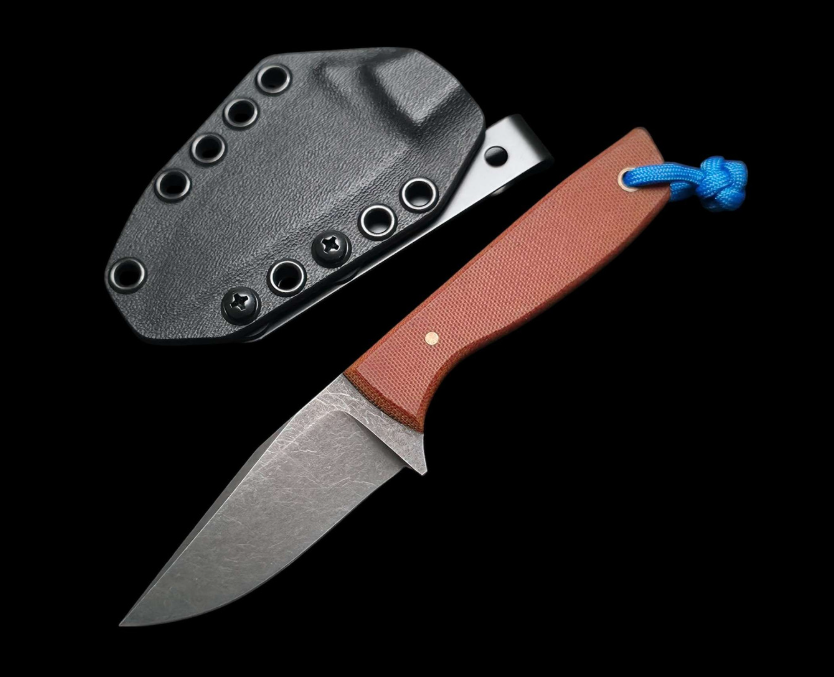
Best Uses by Category
Let’s match the right knife to your specific needs.
- Survival – A full-tang blade with a 4-6 inch blade length, durable steel, and a contoured non-slip handle. Look at the ESEE 6 or TOPS BOB.
- Hunting – Drop-point or clip-point style blades with good edge-holding ability and a comfortable grip (especially if skinning and dressing animals).
- Tactical/Defense – Look at time of deployment, reinforced tip (tanto or spear point), good sheath systems.
- Everyday Carry (EDC) – A smaller, lighter blade under 4 inches with good ergonomics and easy belt carry.
Buying Suggestions for First-Time Buyers
If this will be your first purchase, we have mentioned a few tips to help you select the most appropriate fixed-blade knife.
- Buy From Established Dealers – Select online stores with which you are familiar, dealing in genuine products.
- Read Ratings – Read customer feedback and view video demonstrations to see performance in action.
- Create a Budget – You do not have to break the bank. Excellent fixed blades can be purchased for $70 to $300+.
- Know your Purpose – A hiking knife is not the same as one designed for tactical use.
- Maintenance Supplies – Consider getting a sharpener or oil to keep your knife in good condition.
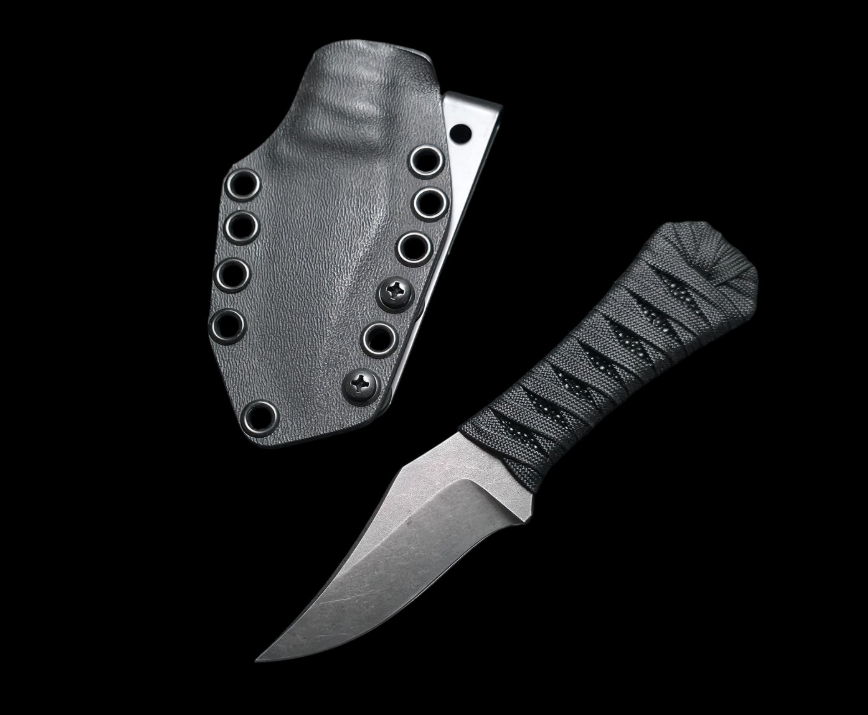
Bottom Line
Finding the best fixed blade knife is not complicated, but it only requires deliberate thought. First, you determine your main purpose, then you think about the other things like blade steel, style, tang, and ergonomics of the handle. The ideal knife fits like an extension of your hand. It's durable, functional, and reliable in any situation.
If you are going into the bush, preparing for emergencies, or just looking for a tough everyday carry (EDC) tool, a fixed blade is a worthy investment. Take your time, shop for deals, and trust quality craftsmanship.
Visit Cajun Knife to find what you are looking for!
FAQs
What is the main benefit of a fixed-blade knife that a folding knife doesn't have?
Fixed-blade knives tend to be more powerful and reliable since they do not have any moving parts. As a result, they suit heavy-duty applications, survival, and tactical purposes.
What is the difference between a full tang knife and a partial tang knife?
A full tang knife is made with blade steel that runs the entire width and length of the handle. Full tang knives are the toughest and most durable knives made.
A partial tang knife has metal that only goes partially into the handle. Partial tang knives are weak knives that should not be used for heavy use.
Are fixed-blade knives legal to carry?
Laws differ from state to state. Some states require fixed-blade knives to be openly carried. Other areas may put some restrictions on carry, like blade length. Always check local laws on knives and restrictions before carrying a knife.
How do you properly sharpen a fixed-blade knife?
The most effective sharpening technique varies with the steel and the type of edge of the blade. For plain edges, guided sharpening systems, diamond sharpeners, or sharpening stones work equally well.
Hold the right blade angle at all times during sharpening. A special tool, such as a ceramic rod, is needed for serrated edges to sharpen each serration individually.
What’s the best steel for a fixed blade knife?
It depends on the purpose for which you are getting the knife or what you prefer in it. For corrosion and edge retention, steels such as S35VN or CPM-3V are great. For field or budget use, 1095 carbon steel is tough but needs maintenance.
